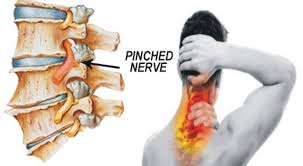
Neck and shoulder pain treatments today: What’s causing my neck pain? Most neck pain comes from muscle strains after repetitive or sudden movements, like whiplash. These can lead to chronic pain, especially if you have poor posture. Joint damage and inflammation are also common causes of neck pain. Joint damage is often caused by traumatic injury, and inflammation may come with age and joint disease, like arthritis. There are also structural problems that can cause neck pain, like bone spurs and pinched nerves. Customized strength exercises — Strengthening the muscles that support your neck, including your shoulders, core and back, can decrease some types of neck pain. Your PT will show you how to do the exercises and create a plan for increasing and maintaining your strength. Discover extra information at shoulder pain.
Using electrical stimulation (e-stim) involves applying currents to activate nerves and muscles, which can assist in reducing pain and improving muscle functionality. Types of Electrical Stimulation: Electrical Nerve Stimulation (TENS): Utilizes voltage electrical currents to block pain signals to the brain. Neuromuscular Electrical Stimulation (NMES): Induces muscle contractions to boost muscle strength and function. Ultrasound therapy employs frequency waves to penetrate deep into tissues, thereby promoting healing and reducing discomfort. Moreover, this approach can be particularly beneficial for conditions like tendonitis, bursitis, and muscle strains.
Chronic neck discomfort often results from factors such as poor posture, muscle tension, or underlying health issues. Therefore, physical therapy plays a crucial role in addressing neck pain by incorporating targeted exercises and hands-on therapy. This approach not only reduces the need for medications and their potential side effects but also aims to improve long-term neck health and overall well-being naturally. Approaches: Performing stretches and strength building exercises targeting the neck and shoulder muscles. Using manual therapy techniques to relieve muscle tension and enhance movement. Understanding principles. Correcting posture habits.
While managing chronic pain may indeed pose challenges, nonetheless, with the right strategies, it is possible to effectively alleviate and control pain levels. Additionally, physical therapy provides tailored approaches to addressing the causes of pain, thereby ultimately supporting long-term health goals for each patient. Moreover, by combining physical therapy with therapies such as occupational therapy, individuals can experience substantial enhancements in their overall well-being. Many everyday activities and unconscious behaviors can lead to neck pain, such as a slouched posture while working on your computer or turning your head too quickly as you reverse your car. But a common cause of neck pain is something that’s essential for our health and well-being: sleep. See more info at https://www.shoulderneckpain.com/.
Position adjustments — It’s important that your neck is properly supported while you sleep to reduce the strain on the muscles, and that often comes down to the position of your body. A physical therapist can suggest sleeping positions that can help reduce your current neck pain while decreasing pain in the future. They can also help you make postural adjustments that can reduce neck pain while you sit, stand and walk as well. Manual therapy — One of the most effective courses of action for neck pain is manual therapy, which is hands-on treatment by a physical therapist. A common manual therapy technique for neck pain is soft tissue mobilization, which involves the therapist using their hands to find and break up the tight muscle knots that are contributing to your pain and stiffness. If you’re consistently waking up with neck pain, talk to your doctor about possible conditions or injuries that could be causing your symptoms.
Once you learn how to properly engage in stretching and exercise routines, it is helpful to take them home with you. Your therapist will craft a home exercise program for consistent strength-building and pain relief so that you can maintain your progress between clinic visits. Some programs may require inexpensive, accessible equipment, while others use common household objects. Pain Management and Tissue Mobilization – Is your pain currently too intense to jump into strength and flexibility exercises? Pain relief precedes stretching and moving if you have these limitations. Why not work with a physical therapist to choose a strategy that best reduces pain for you? Therapeutic options for neck pain may include: Electrical stimulation: A device sends electrical pulses into the injured tissues to stimulate healing and ease aches. Ultrasound therapy: Directing ultrasound waves into injured tissues reduces pain and swelling for some patients. Acupuncture: Systematically puncturing the skin with tiny needles can ease discomfort and enhance blood flow to targeted areas.